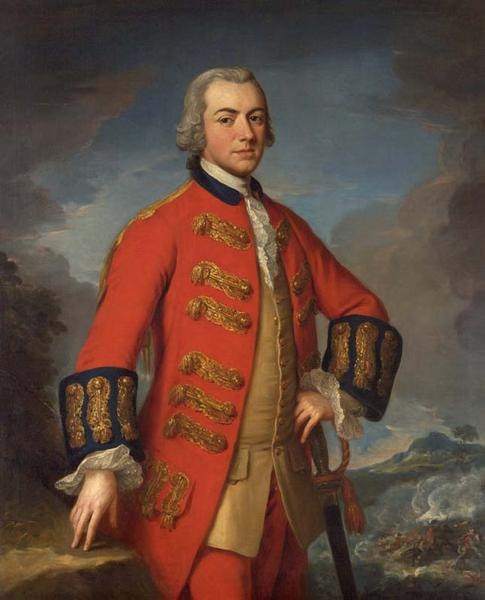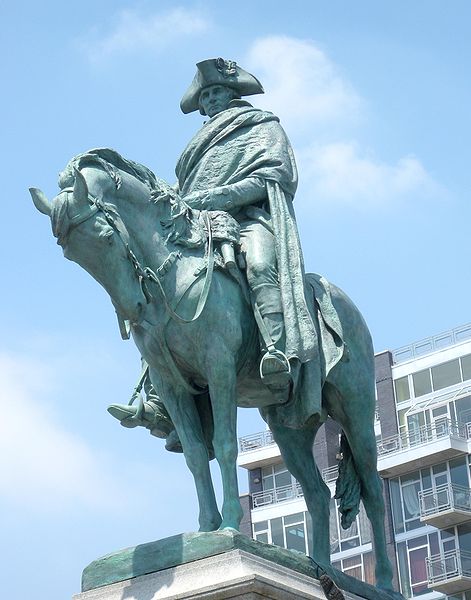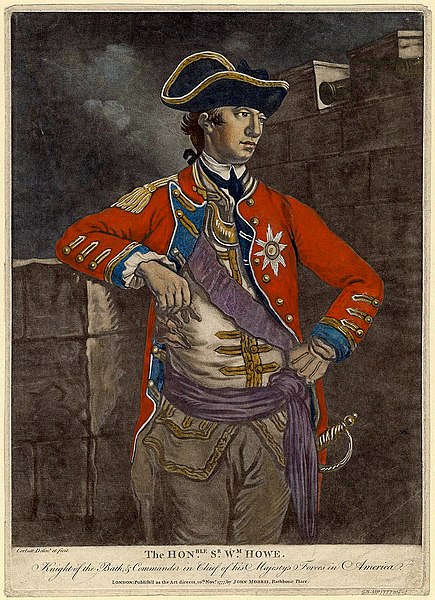The Landing at Kip's Bay was a British amphibious landing during the New York Campaign in the American Revolutionary War on September 15, 1776. It occurred on the East River shore of Manhattan north of what then constituted New York City.
The British Landing at Kip’s Bay, New York Island, 15 September 1776 by Robert Cleveley, 1777 (Royal Museums Greenwich)
General Sir Henry Clinton
Statue of George Washington in Brooklyn
General Israel Putnam
New York and New Jersey campaign
The New York and New Jersey campaign in 1776 and the winter months of 1777 was a series of American Revolutionary War battles for control of the Port of New York and the state of New Jersey, fought between British forces under General Sir William Howe and the Continental Army under General George Washington. Howe was successful in driving Washington out of New York, but overextended his reach into New Jersey, and ended the New York and New Jersey campaign in January 1777 with only a few outposts near New York City under British control. The British held New York Harbor for the rest of the Revolutionary War, using it as a base for expeditions against other targets.
George Washington, a 1776 portrait by Charles Willson Peale
Admiral Richard Howe, from a mezzotint engraving by R. Dunkarton, after the painting by John Singleton Copley
General William Howe, 1777 mezzotint
The Battle of Long Island, 1776, an 1858 portrait by Alonzo Chappel, featuring Lord Stirling in the background leading an attack against the British in order to enable the retreat of other troops in the foreground across a mill pond to Brooklyn Heights.








